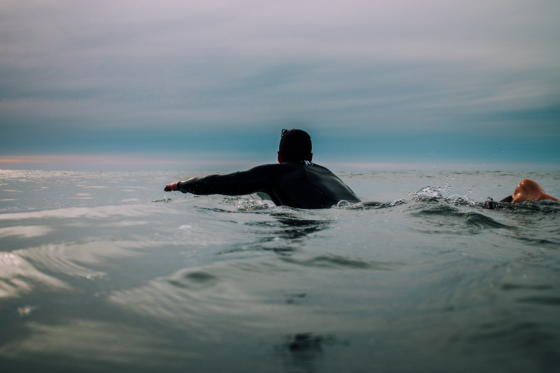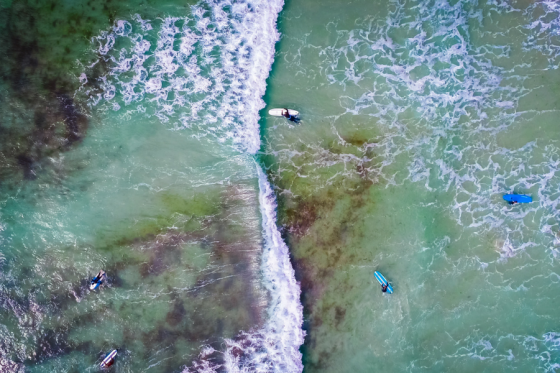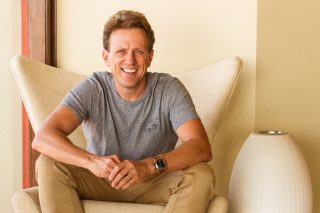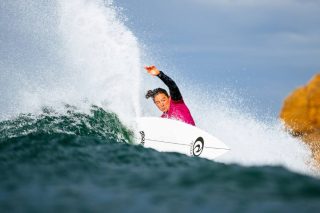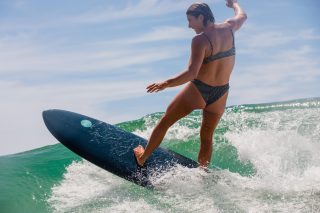In 1998, the lucrative U.S. licensing rights for Billabong were up for renewal after the company had grown to a reported US$70m in sales in North America. Billabong USA’s trajectory was strong and getting stronger, but the man responsible was already looking over the horizon. Bob Hurley, together with his management team including Bob Rowland and Chip Rowland, Mike Ochsner, Joe Knoernschild, Tom Fletcher and Bob’s father Bill Hurley, decided not to renew the US licence. Hurley, who’d held the licence since 1983, simply handed the rights back to Billabong International, for nothing.
In the world outside Orange County, handing those rights back for free and going ‘solo’ was considered ambitious at best. But to those with close knowledge of Bob Hurley, it was nothing out of the ordinary. “That’s just Bob,” says 1978 World Champion Rabbit Bartholomew. “It’s extraordinary, but that’s him.”
The pair had met years before, when Hurley shaped Rabbit a board whilst working as one of the hot up-and-coming shapers out of California, learning his trade through stints at Lightning Bolt, Windansea and Wave Tools. In 1981, Hurley broke through, establishing Hurley Surfboards/International Pro Designs (I.P.D.) at 23 years of age. Hurley went on to lay the decals on more than 15,000 boards from 1975 to 1983.
“One thing I really wanted to do was make boards,” he told local media earlier this year. “I liked trying to figure out what people wanted and tried to give it to them. The satisfaction of giving a board to someone is so neat. It’s instant gratification.”
Then into his life walked Gordon Merchant. The Queensland entrepreneur just appeared in the shop one day, according to Hurley, and they sketched out a deal for a shipment of boardshorts. After borrowing funds from friends and family to get the shipping crate moving, Hurley had (comparatively) modest expectations for a return. “Our ten year plan was to do $1.7 million in sales. Year 1 we did $80,000, year 2 we did $300,000, then next year we did $700,000 and then we did $3 million.” But over the 16 year life of the licence agreement, he massively eclipsed those figures.
Hurley has nothing but affection for those years. “Working with Gordon and the Billabong team was incredibly fun,” he recalls. “We had a legendary surf team, we made some movies, held a groundbreaking contest in Hawaii, and had some great products. I have no regrets, only gratitude to Gordon and Rena for their belief in me,” Hurley told ASB. But as the annual returns closed in on $100 million, Hurley did the unthinkable. He walked away. It’s a decision that’s hard to process, given the numbers involved, but in keeping with his reputation as the iceman of international surf commerce, he’s never expressed a moment’s doubt about the wisdom of what he did. “The transition turned out excellently for both (parties), and that makes me stoked.”
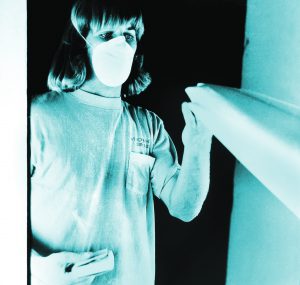
Back then, Transworld Surf asked Hurley what troubled him most about that decision. For one so well versed in the hard face of business, his answer was revealing: “Financially it wasn’t a problem, operationally not a problem, business-wise not a problem. All the emotional upset that people had to experience because I made what I thought was the best choice for our company. That was the hardest thing.”
Searching for a market with more cultural diversity than Billabong’s direct appeal to surfers, Hurley went on to put his own name to a new brand that would be based in Costa Mesa, seeking out not only surfers but skaters, street culture devotees and more. Shrewd alignments with pop-punk and heavy metal bands, most notably Blink 182, cemented the new brand’s street cred. Very quickly, it came to be seen as a brilliant and well-informed gamble, as the empire spread to international offices in Sydney, Tokyo, Barcelona and Bali,» Show more Hurley is a company based on inclusion, says chairman and founder Bob Hurley.
This philosophy applied to Bob Hurley’s early years as a Huntington Beach shaper, working with friends alongside the world’s best athletes to make a better surfboard. It applied to the company’s launch in 1999, when Hurley decided to start a brand that was a true microphone for youth.
Inclusion remains a guiding principle of the company today, where innovative products like Phantom Boardshorts and game-changing events like the US Open of Surfing continue to redefine what is possible in our world. Hurley headquarters are in Costa Mesa, CA with international offices in Sydney, Tokyo, Barcelona and Bali.
but the decision to go it alone was a classic Hurley highwire act.
An important part of the Hurley business formula, from the outset, was strong, long term relationships with retailers. North Avalon’s Beach Without Sand was the first to see the potential in Hurley the brand, and owner David Watson formed a strong bond with Hurley the man. “I’ve known Bob since we first bumped into each other in Tavarua in the late 90’s,” David recalls. “He was just a genuinely nice guy and we got talking about him doing his own thing and he showed me some boardshorts. Hurley had this instant underground appeal – it was obvious that it had credibility, it had legs, and so we began importing Hurley direct from the states, well before it was readily available elsewhere in Australia.”
“Chris ‘Kong’ Friend was the real driver. He could see that Hurley Advantage was a leading-edge product. Kong got 150% behind it, went ballistic on it. He could see the future of boardshorts wasn’t stuck at a $59 price point and available everywhere. Hurley gave us the product, the sales tools and the marketing resources that gave BWS an edge. At one stage BWS was the number one selling account (per door) in all of Australia of Hurley Advantage. We’d sold over 200 pairs, outselling places like SDS on a per door basis.”
Kong takes up the story: “Simon Haskell has always been well liked – he’s a good friend and a great retailer himself. Simon was the first to introduce us to the notion of a strategic alliance. I remember Simon coming into BWS with a sixpack of beers on closing one night, sitting down and saying “Right – how do we make this work for both of us.” Right then I knew that if this is the guy selling to me, and he mirrored what Bob was onto us about, then it’s easy to work out where Hurley’s going to go… and that’s straight up.”
“I’d been a retailer for 26 years, and we were running out of reasons to sell boardshorts to the consumer. I could walk into Target and see a $25 pair of boardshorts and I swear if they had a H or a Q on them, they were almost the same as we were seeing in surf shops at the time and we’d run out of excuses to sell them at three times the price. Hurley were (to surf) like Apple was to the IT sector. They threw down a challenge for me to sell a $120 board short and I accepted it. Technical boardshorts hadn’t been considered by other brands at the time. In my mind they’re the saviours of the board short category for surf retailers. Lighter, technical, rider-driven performance boardshorts saved us.”
Fast forward a mere four years to May 12, 2002, and Bob Hurley sold his brand to Nike, Inc. for an undisclosed amount. Having comfortably handled the giant shadow of Billabong in his business life, Hurley was equally undaunted by Nike’s massive presence. Ten years on from that sale, in the middle of last year Nike named Bob Hurley as interim CEO at Hurley International, LLC. following the departure of Michael Egeck. The announcement brought Bob Hurley back within the orbit of Roger Wyett, president of Nike, Inc. Affiliates, and a former CEO of Hurley, underscoring yet again the complex web of relationships that have come to define the Nike / Hurley axis. In the midst of all that, the product innovations kept rolling. Hurley’s Phantom Fuse boardshort has just taken out an unprecedented fifth SIMA Boardshort of the Year award. Hurley explained the evolution of the shorts to ASB in these terms:
“At the start of the journey, Bruce Moore (our VP of Innovation) and Ryan Hurley worked closely with Rob Machado to develop the ultimate performance boardshort. Many of our athletes participated in and contributed to our innovation summits. Our partnership with Nike allowed us complete access to collaborate with the Nike sports Research Lab (NSRL). There’s a great back and forth, and we brainstorm well. The team did a lot of work with materials and body mapping to ensure the shorts were lighter, faster and more flexible. The original fabric is a stretch woven that stretches 120% – this was previously unimagined for boardshorts.”
Such was the innovative nature of the Phantom design, that it led to several patents being taken out to protect the technology. “We have three patents,” explains Hurley. “The EZ Fly (no Velcro) boardshort; the zipperless wetsuit; and the Phantom Boardshort. The Phantom patent is for Australia, Europe and the USA. Generally speaking, patents are usually not respected by competitors, (although) the patent holder does have the legal right to stop competitors from making similar products. We recently made an agreement with a mass retailer, where they agreed to stop making a product that we felt was Phantom-like. This seems good for the industry. Our hope is that other brands in the surf industry would innovate and patent more products. In the end, the realistic benefit is that you are positioned as the innovation leader, and you’re able to make a better surfing experience.”
To this end, Hurley is proud that his company has “delivered a product that feels like a “second skin” and makes surfing more fun”, but what’s interesting about that ethos is that it now extends into other product lines. The Phantom Sandal and Phantom Shell are two examples of how Hurley is extending its innovation platform from boardshorts into other product divisions, driven by the twin engines of “our athletes and our curiosity.”
“Faster, lighter, more flexible is our ethos,” Hurley told ASB. “There are lots of great things in the pipeline.” As much as this may appear to be a comment on the products themselves, it’s equally true of Hurley’s retail model. Having no retail stores of its own, Hurley relies on a network of retail partnerships, informally known as “the People’s Republic of Hurley”.
“We’ve always enjoyed our partnerships,” Hurley told us. “We enjoy sharing what we do here on a daily basis. It is also super fun to have our friends visit. We got a lot of inspiration and energy from them. Because we don’t have retail stores of our own, we have a heavy reliance on our partners understanding and being able to communicate what Hurley is and why it exists.”
For many years now, Bob Hurley has made a habit of visiting Australia. There’s a strong sense that this is about more than just watching over the empire: he seems to genuinely enjoy the place. Indeed, he confirms,
“we’ve been regularly visiting Australia since 1982. It certainly does feel like home when I’m there. I love the people, the culture and the beaches. And we’ve got an excellent team, led by Jason Haynes.”
Hurley outpointed a number of Australian surf brands last year for the naming rights to Surfing Australia’s High Performance Centre. At its core, the HPC focuses on performance and innovation. It’s a world first initiative. ASB put it to Bob Hurley that hitching the company’s name to such a pioneering venture must have been a bold statement to local industry. He laughs off the idea that it was a statement of any kind. “To be clear,” he says, “it was not up for bid. We were just quick to see the value. There was equal opportunity to support the centre. We believe in Andrew Stark. The team he has assembled and the folks he includes are impressive. When he got it rolling we were immediately on board.”
Hurley sees a shift in the Australian scene, from domination by the manufacturers to better opportunities for the retailers and increasing consumer power in the market. At the US Open of Surfing, Hurley took the time to host a number of Australian industry identities, underlining the respect in which he holds the locals. “Kong and Watto at Beach Without Sand were our first key partners who really embraced the newer vision of partnership with our brand. Chris Athos also stands out as a man of vision. Tim Hanrahan and Daz (Longbottom) have both made a big impression on me personally. On the whole, most of the folks that we deal with in Australia are outstanding people and great at their craft.” Where Australians are concerned, Hurley has put his money where his mouth is, recruiting Aussies including Simon Haskell, Jason Haynes, Rabbit Bartholomew, Barton Lynch, Matt Cattle and Mitch Ross to a wide variety of roles.
BWS’s Kong claims not to have noticed any difference in his dealings with Hurley since Nike acquired the company.
“It’s still the same people we deal with,” he says. “Hurley is a lot like the Billabong of the 80’s or the 90’s. From the employees, all the way through to the head of the tree, it feels like family, it feels familiar. We’re welcome in the inner sanctum, not some distant third cousin.” But on further reflection, there’s one difference he can discern: “Nike’s influence on the integration of product, athlete and marketing. It’s seamless. They dot all the I’s and cross the T’s. What Nike did was come in with the rag and polish the diamond.”
Like every business that revolves around a charismatic lead actor, succession is an issue for Hurley the company, and Hurley the man. How do you replicate that winning formula? Well, one way might be to recruit your own progeny – Ryan Hurley is now creative director for Hurley. When ASB asked Bob Hurley whether he thinks succession planning is something that’s missing from most of the major Australian surfwear brands, he told us “I can’t really speak to what goes on with other brands. I’d say that it’s always wise to elevate young talent, (to) embrace and empower the next generation, but then again we believe in Microphone for Youth: handing over the keys to the car.”
“Microphone for Youth” is, along with “inclusion” a Hurley rallying cry, and it brings us to a fascinating aspect of the Bob Hurley way of doing business: jargon. Reading Hurley media releases, and then listening to Bob Hurley himself, it’s hard not to do a double-take at the difference in terminology. To put it mildly, Hurley the man is very direct. His corporate voice, on the other hand, has a tendency to, how should we say it…meander.
Take two recent examples: first, Hurley the man, talking to local Californian media – “We’d like to be the best surf company that’s ever existed.” Or this: “Work incredibly hard and surround yourself with astounding people. Because you’ll probably end up like the people you’re around.” Now, let’s hear from Bob Hurley channeling Hurley the company: “As part of Nike Inc.’s category offense and portfolio strategy, Nike is doubling down on surf through the Hurley brand. We believe that this elevated focus will deliver a higher level of product innovation, consumer relationships and athlete experience. It’s a decision that makes full sense through the lens of the consumer and therefore the retailer.”
Got that? The contrast perhaps arises from the duality in Bob Hurley’s roles over recent years. As a spokesperson for the interests of major corporates, he’s almost obliged to adopt the nomenclature of financial reporting: opaque and florid. This might be said to cut across his first instinct as an entrepreneur; to be blunt, forceful and clear. One of the more interesting aspects of the Nike / Hurley relationship is the shifting line between where Hurley ends and Nike begins. Nike recently relinquished the title sponsorship of the US Open, whilst Hurley simultaneously ended its association with the event. We asked Hurley how the brand maintains autonomy in its day-to-day operations from Nike. He told us “We work closely with Nike: they’re our friends and our parent. Having said that, we drive Hurley on a daily basis and Nike supports our vision. We love being a part of Nike. Innovation, inspiration on a daily basis. The US Open was a part of a long term strategy: first to elevate events, the experience and the sport, (and) next to focus those same efforts on athletes and elevating our retail partnerships.”
Hurley has somehow managed to snare nine of the thirty four men on the world tour, along with plenty of the women. But one stands out above all others – John John. So how does the Nike ‘all star’ roster of athletes (including Julian Wilson) integrate into the Hurley marketing mix, when the lights are shining so brightly on John-John? “The integration of our magical athlete roster is really pretty simple,” Hurley explained. “Each athlete is his/her own person. We’re facilitators to help them with their dreams. Everyone has an equal shot – in this modern world, companies do not make or break athletes. They have almost total control over their destiny. Rob Machado has been really helpful with the team. We’re here to enable their personal magic.” Which is not to say there isn’t a special enthusiasm reserved for John John in the Hurley panoply: “John John is like a video game character,” he enthused. “He skates and surfs like we all want to. Super stoked to be a part of his journey.”
In the early months of this year came the announcement that Nike was bailing out of surf, shuffling its blue ribbon athlete stable under the Hurley label and retreating back towards the sports that earned it marquee status. Industry analysts have pored over the decision, looking for implications for surf retail generally. Was it a case that the Nike brand didn’t gel with core surf customers, and that Hurley was seen to be more ‘inclusive’? Bob Hurley’s response is more pragmatic than that: “Hurley is an authentic surf brand from Huntington Beach. It just didn’t make sense to have two parts of the same company focusing on surf.”
The essence of the Hurley formula remains as elusive as ever. What do you point to, when trying to distill the X factor that seems to keep bringing Bob Hurley out on top with each successive move? Innovation, self belief, vision…all of these epithets have been thrown around. Maybe it’s all of these things, coupled with the personality of the man. “Bob’s never changed,” Kong told us. “He’s still just a kid himself.”

